Rectus Capitis Posterior Minor and Major Muscle Anatomy
Table of Contents
Rectus Capitis Posterior Minor Muscle
What is Rectus Capitis Posterior Minor Muscle?
- Rectus capitis posterior minor muscle is a coupled or paired muscle situated in the suboccipital compartment or area of the neck. It is the portion of the suboccipital muscle group which comprises 4 muscles in total, the other 3 being rectus capitis posterior major, obliquus capitis inferior or the obliquus capitis superior.
- Rectus capitis posterior minor (Latin ‘Musculus rectus capitis posterior minor’) stands for the ‘lesser posterior straight muscle of the head’. True to this description, the muscle seems like a tiny pyramid extending straight on either side of the midline. It can assist you to extend the head on the neck or rotating the head from side to side. Unfortunately, it can also be the direct culprit for many headaches.
Relations of Rectus Capitis Posterior Minor Muscle
- Rectus capitis posterior minor is situated in the suboccipital muscle compartment. This compartment is situated inferior to both the external occipital protuberance or in the inferior nuchal line of the occipital bone. Rectus capitis posterior minor is the most medial suboccipital muscle, situated on either side of the midline. Rectus capitis posterior major is situated lateral or superficial to it. Rectus capitis posterior minor is surfaced by semispinalis capitis, while the posterior atlantooccipital membrane is located deeper to it. The membrane is directly joined to the overlying rectus capitis posterior minor muscle by a soft tissue structure.
Origin
- Rectus capitis posterior minor muscle has a pyramidal shape. It arises from the posterior tubercle of the atlas (C1) through a narrow or pointed tendon.
Insertion
- The muscle runs in a superolateral direction, fanning out to a broader attachment into the medial part of the inferior nuchal line situated on the occipital bone.
Nerve Supply
- Rectus capitis posterior minor is a nerve supplied by the suboccipital nerve, also termed as the posterior ramus of the 1st (C1) spinal nerve. The suboccipital nerve reaches rectus capitis posterior minor by running between the cranium or the atlas.
Blood Supply
- Rectus capitis posterior minor collects its vascular blood from the vertebral artery or from the deep descending branch of the occipital artery.
Action
- The muscle works in the Bilateral contraction – Atlantooccipital joint: Head extension
The function of Rectus Capitis Posterior Minor Muscle
- Rectus capitis posterior minor enlarged across the atlantooccipital joint. Thus when both muscles squeeze bilaterally they work to extend the head on the neck. This action has a primary postural role, stabilizing the head while standing or during different body movements. The muscle also works to stabilize the atlantooccipital membrane.
Clinical SIgnificance of Rectus Capitis Posterior Minor Muscle
Chronic headaches
- Although rectus capitis posterior minor is a tiny muscle, its relations or the position make it very important clinically. As you know, the muscle over shadows the posterior atlantooccipital membrane, and it is directly joined to it by a soft tissue jointment. In turn, the atlantooccipital membrane is joined to the surrounding dura mater through myodural bridges. It has shown that various changes of the rectus capitis posterior minor especially (hypertrophy, tension, atrophy, trauma) can irritate the majorly sensitive dura mater by acting through the myodural bridges. The Resultant pain can lead to manifest as chronic headaches.
Rectus Capitis Posterior Major Muscle
What is Rectus Capitis Posterior Major Muscle?
- Rectus capitis posterior major muscle is 1 of 4 tiny or small suboccipital muscles; with rectus capitis posterior minor, obliquus capitis inferior, or the obliquus capitis superior being the other 3.
- When both muscles contract bilaterally they work to extend the head on the neck, while the unilateral contraction rotates the head ipsilaterally at the atlantoaxial joint.
Relations of Rectus Capitis Posterior Major Muscle
- Rectus capitis posterior major is situated lateral or the superficial to rectus capitis posterior minor, & the deeper and medial to obliquus capitis superior. Also, rectus capitis posterior major muscle creates the superomedial boundary of the suboccipital triangle.
- A soft tissue connection or joining between the rectus the capitis posterior major or the cervical dura mater of the meninges in the atlantoaxial interspace has also occurred but this relationship has not been analyzed enough to establish any other related clinical significance.
Origin
- Rectus capitis posterior major muscle is triangular in the shape. It joined to the spinous process of the axis (the second cervical vertebra) deeper to the obliquus capitis superior or the semispinalis capitis muscles.
Insertion
- Its fibers cross the superolateral, skipping the 1st cervical vertebra, to insert through a broader joined on the lateral part of the inferior nuchal line or the occipital bone directly beneath it.
Nerve Supply
- Rectus capitis posterior major muscle, together with the other suboccipital muscles and semispinalis capitis, is a nerve supplied by the suboccipital nerve (the 1st cervical posterior ramus).
Blood Supply
- Just like the other suboccipital muscle, rectus capitis posterior major collects its vascular supply from the vertebral artery or the deeper descending branches of the occipital artery.
- The vertebral vein is held for its venous drainage via the posterior external vertebral venous plexus.
Action
- The muscle works in the Bilateral contraction at the atlantooccipital joint: Head extension
- The muscle works in the Unilateral contraction at the atlantoaxial joint: Head rotation (ipsilateral) side.
The function of Rectus Capitis Posterior Major Muscle
- Rectus capitis muscle is included in the extension of the head on the neck. Working bilaterally, this muscle creates extension at the atlanto-occipital joints, while when working unilaterally it generates atlantoaxial rotation of the head (along with obliquus capitis inferior or the splenius capitis) towards the ipsilateral side. Moreover, rectus capitis posterior major also works to stabilize the atlantooccipital joint while during the movements making it a necessary postural muscle.
Clinical Significance of Rectus Capitis Posterior Major Muscle
- Although rectus capitis posterior minor is a tiny or small muscle, its relations or the position make it very important clinically. As you know, the muscle over shadows the posterior atlantooccipital membrane, & it is directly joined to it by a soft tissue jointing. In turn, the atlantooccipital membrane is joined to the surrounding dura mater through the myodural bridges. It has been shown that many changes of the rectus capitis posterior minor especially (hypertrophy, tension, atrophy, and trauma) can irritate the highly sensitive dura mater by working through the myodural bridges. Resultant pain can manifest as chronic headaches.
Stretching Exercise for Rectus Capitis Posterior Minor and Major Muscle
Rectus Capitis Posterior Major Forward and backward stretches
- Sitting on the edge of a chair with the back straight & the chin should be parallel to the floor.
- Tilt the head forward gently until the stretch is felt in the back of the neck. Hold for 5 secs.
- Lift the chin & then tilt the head back until the stretch is felt in the upper neck.
- Hold for 5 secs.
- Perform the exercise for ten reps periodically throughout the day to relieve a rectus capitis neck strain.
Suboccipital Muscle Stretch
Manual Stretching
Patient position & the procedure: Sitting
- How to do:
- Identify the spinous process of the second cervical vertebra & then stabilize it with the thumb or with the 2nd metacarpophalangeal joint (or with the thumb or the index finger surrounding the transverse processes).
- Tell the patient gently nod, doing just a tipping motion of the head on the upper spine. Guide the motion by putting the opposite hand across the forehead of the patient.
- You can hold for 30 secs & then do three reps.
Patient position and procedure: Supine
- How to do:
- Sitting on a stool at the head of the treatment table while the forearms are resting on the table. 1 hand stabilizes the C2 vertebra by grabbing the transverse processes between the proximal part of the thumb or the index finger; the opposite hand assists the occiput.
- Nod the head of the patient with the hand below the occiput to take up the slack of the suboccipital muscles; then tell the patient to roll the eyes upside.
- This creates a gentle isometric contraction of the muscles of the suboccipital. Afterward maintaining for 6 secs, tell the patient to roll the eyes downward.
- As the suboccipital muscles easy, take up the slack by passively nodding the head through a new range of motion. The only movement should be happening between the occiput or the C2.
- The contraction is slow in order to not cause the overflow into the multi-segmental erector spinal muscles or the upper trapezius muscles.
- You can hold for 30 secs them repeat three reps.
Self-Stretching
- How to do:
- Patient position & the procedure: Supine or sitting. Guide the patient to nod the head, bringing the chin nearer to the larynx until a stretch is felt in the suboccipital region. Putting minor pressure below the occipital area with the palm of the hand while tipping the patient’s head forward will reinforce the motion.
- You can hold it for 30 secs & then repeat three reps of it.
Rectus Capitis Muscle Stretch
- The rectus capitis muscle (of the transversospinalis group) is stretched by flexing the head & the neck at the spinal joints.
- Adding in lateral flexion (not seen in the accompanying illustration) will raise the efficacy of the stretch for the other-side semispinalis capitis muscle.
- You can hold for 30 secs & the three reps.
Rectus Capitis Minor Muscle Stretch
- The right side semispinalis cervicis muscle is stretched by flexing, the left laterally flexing, & the left rotating the neck at the spinal joints, while the right side of the shoulder girdle is allowed to raise.
- You can hold for 30 secs & the three reps.
Table Rectus Capitis Stretch
- Sitting in front of a table.
- Keep the chin in & down throughout this stretch.
- Place the left fist on the left side of the chin.
- Place the left elbow onto the table in front of you.
- Rest the weight of the head onto your fist.
- Tilt the head to the left.
- Apply more pressure to the chin to gear up the stretch.
- The goal is to feel a firm stretch on the right side of the neck.
- Hold for 30 secs.
- Perform on the alternate side.
Stretch to Capitis
- Tuck the chin in & downwards.
- Tilt the head to the right.
- Put the right hand on the opposite side of the head.
- Apply downward compression.
- Slowly turn the head to the left.
- The goal is to feel a firm stretch on the left side of the Rectus Capitis muscle.
- Hold for 30 secs, 3 rep.
- Repeat on the alternate side.
Rectus Capitis Stretch Alterations
- Place the fingers on top of the left side collar bone.
- Pulling the skin down.
- Tuck the chin in & down.
- Slowly turn the head towards the left side.
- Tilt the head towards the right side.
- The goal is to feel a stretch on the left side of the Rectus Capitis muscle.
- Hold for 30 secs, 3 rep.
- Repeat on the alternate side.
Chair Lean Stretch
- Sitting down on a chair.
- By using the right hand, grab onto the side of the chair.
- Keep the shoulder completely relaxed.
- Leaning the body completely towards the left side.
- Then tuck the chin in & downwards.
- Tilt the head towards the left.
- Place the left hand on the right side of the head.
- Apply downward compression.
- The goal is to feel a stretch on the right Rectus Capitis muscle..
- Hold for 30 secs, 3 rep.
- Repeat on the alternate side.
Neck Elongation Stretch
- Tuck the chin in & downwards.
- Now Slide the head towards the right side.
- Then Elongate the right side of the neck in an upwards direction.
- The goal is to feel a stretch on the right side of the neck.
- Repeat on the alternate sides.
- Perform 30 reps, 3 rep.
Strengthening Exercise For Rectus Capitis Muscle
Rectus capitis exercises
Neck retraction exercises
- Sit on soft ground or a chair & then engage the core to help stabilize the spine.
- Brace the posterior muscles in the neck to bring the head back into a steady position while having the chin slightly downward.
- Maintain the position briefly.
- Relax & then repeat.
- Start with 1 set of 5 reps and work the way up to ten reps in total.
Rectus Major Exercises
Chin to chest stretch
- Get into a sitting position on the ground. Put both hands at the base of the head with fingers interlocked.
- Point the thumbs down or the elbows extended ahead.
- Pull the head down to the chest & hold for 20 to 30 secs.
- Perform ten reps of this exercise.
Rectus Minor Exercises
Superman Exercise
- Do this exercise on a mat. Lie down flat on the stomach with the arms extended outside in front of the body.
- The legs should be kept flat on the ground, as well as the arms.
- Lift the arms or the legs simultaneously like you are trying to fly. squeeze the lower back. Make sure to respiration occur properly.
- Depending on the individual type of fitness, maintain the position for a minimum of 2 secs up to 5 secs per rep. Aim for 5 to 10 reps at a time in sets of 2 to 3.
- Individual fitness levels will determine how many reps or sets the individual is capable of doing at a single time or in a single day.
Theraban Rows
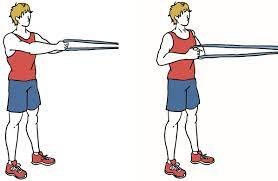
- First Place the theraband around a doorknob & tie a knot in the theraband & close it in the door.
- The band is at chest level.
- You are standing tall with each end of Theraband in your hands & knee joint slightly bent, abdominal muscles tight.
- Must be Maintained the tight trunk muscles & pull arms back while squeezing the shoulder blades together.
- You are trying to focus on squeezing the shoulder blades without shrugging the shoulder joint up towards the ears.
- Then return to starting position but Do not lean back.
- Hold this exercise position for 10 seconds.
- Perform the 10 times in 1 session & 3 sessions per day.
Head lifts
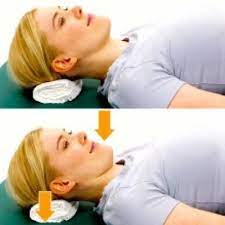
- You are Lie flat on the back with the arms stretched to the sides.
- Nod the head & tuck in the chin.
- Hold this exercise for a few seconds before releasing back to a neutral position.
- Hold this exercise position for 10 seconds.
- Perform the 10 times in 1 session & 3 sessions per day.
Seated Clasped Neck Stretch
- You are sitting comfortably on the floor & in a chair.
- Must place your body in proper alignment.
- Then Clasp the hands & bring both palms to the back of the head.
- Try to slowly press the hands down toward the thighs & tucking the chin into the chest.
- Maintain this stretching position for 30 secs.
- Perform the three times in one session and three sessions per day.
Tucked in Exercise
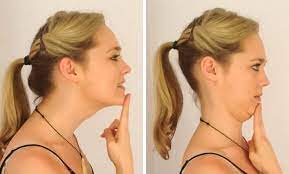
- The patient’s position should be Sitting straight & look straight ahead with the ears level parallel over the shoulders joints.
- Place 3 to 4 fingers on the chin.
- Maintain the finger, pull the chin & head extended beside up to a slowly stretch is felt at the bottom of the base of the head & top of the neck.
- Maintain or hold for 5 to 10 secs. Repeat seven to ten times.
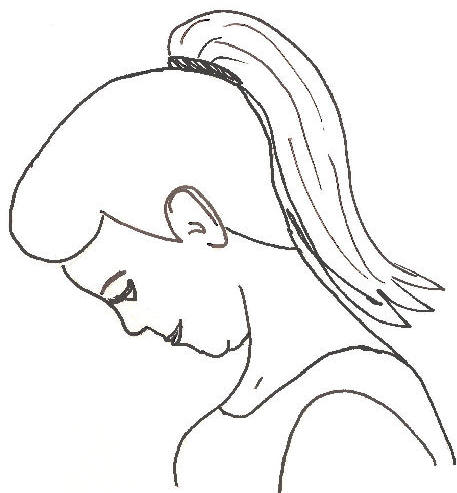
Neck flexion Exercise (Neck tilt)
- In Relax sitting position flex the head down to rest the chin on the chest (Flex the neck fully).
- Gently tense the neck muscles & hold for 4 to 8 secs.
- Return to the initial position & repeat seven to ten times.
Neck extension exercise
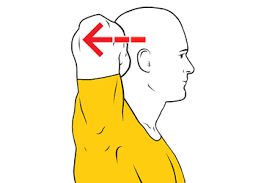
- In Relax sitting position without arching the back, slowly move the head backward so you are looking upward.
- Hold for 5 to 10 secs. Return to starting position.
- This is a good exercise to do during working hours to prevent neck strain.
- Gently tense the neck muscles & hold for 5 to 10 secs.
- Return to a neutral position & repeat 10 times.
Neck flexion Exercise (side to side)
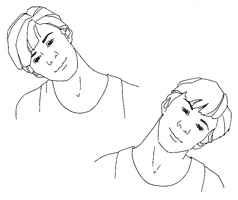
- Flex the head down towards the shoulder, & try to touch the shoulder with the ear (Without elevating the shoulder).
- Gently tense the neck muscles & hold for 8 secs.
- Return the head to a neutral position & repeat in the opposite direction.
- Repeat 10 times on both sides.
Neck Rotation exercise

- Begin this exercise by doing a rotation of the head towards 1 side, keeping the chin at the same level & moving within normal limits.
- Slowly stretch the neck muscles & hold for eight secs.
- Back the head to the neutral position & repeat in the other direction.
- Repeat 10 times on each side.
Revolved Triangle Exercise
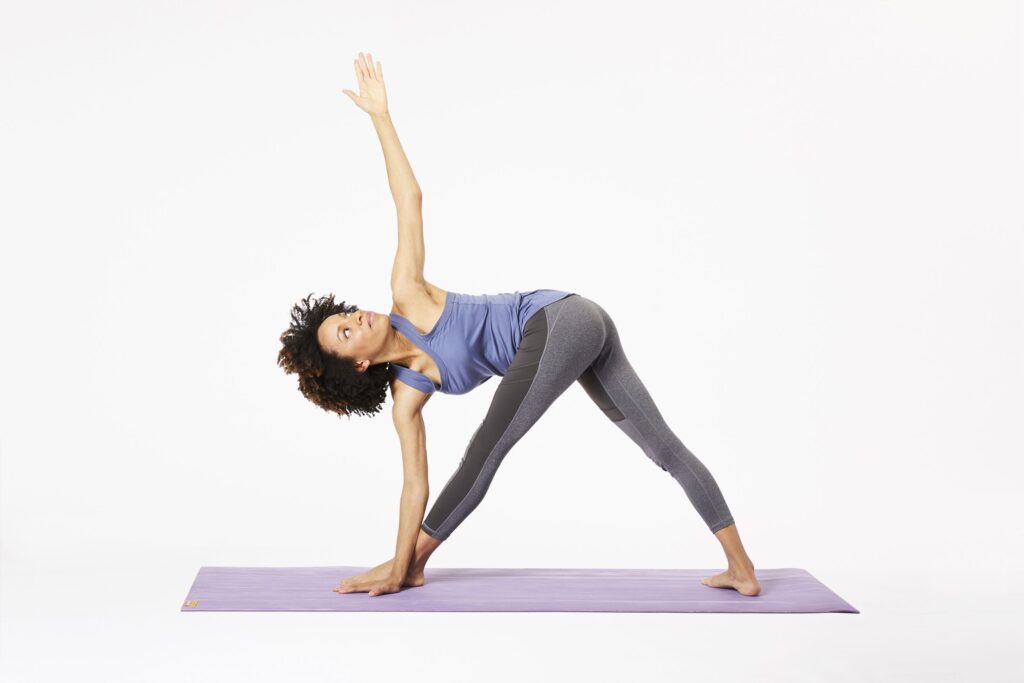
- Begin this exercise by standing with the feet about four feet apart.
- Face the right toes forward & the left toes out at a slight angle.
- Square the hips & face forward in the same direction the right toes are pointing.
- Lift the arms up at the sides so they are parallel to the floor.
- Slowly hinge at the hips to fold forward, stopping when the torso is parallel to the floor.
- Bring the left hand to the leg, the floor, or a block, wherever you can reach.
- Extend the right arm straight up with the palm facing away from the body.
- Turn the gaze to look up toward the right thumb.
- Exhale to turn the neck to look down at the floor.
- Inhale as you return the gaze upward.
- Keep the rest of the body stable & continue these neck rotations as you stay in the pose for up to one min.
- Perform on the alternate side.
Upward Plank Exercise
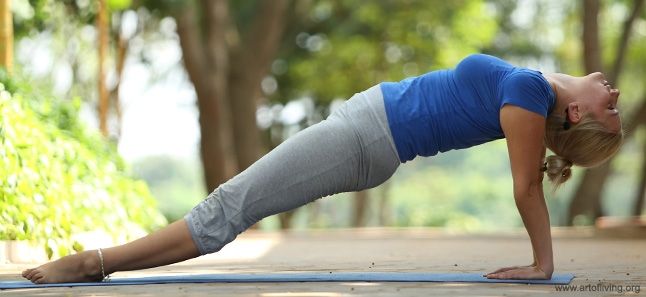
- This pose allows you to passively hang the head back & down, releasing tension in the neck & shoulders. This lengthens & stretches the SCM, chest, & shoulder muscles.
- Make sure the back of the neck is fully relaxed to avoid compressing the spine. If it is uncomfortable for you to let the head hang back, you can tuck the chin into the chest & lengthen the back of the neck. Precise on engaging the neck muscles without straining.
- You can also allow the head to rest back on some type of support such as a chair, a wall, or stacked blocks.
- How to do- Come into a seated position with the legs straight in front of you.
- Press the palms to the floor alongside the hips.
- Lift the hips & bring the feet under the knees.
- Deepen the pose by straightening the legs.
- Open the chest and & let the head drop back.
- Hold for up to 30 secs.
- Do this pose up to three times.
Prone Cobra Exercise
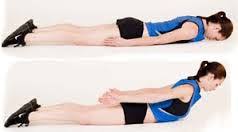
- This exercise is occur by lying face downwards on the ground & assist gravity as resistance in the reinforcing process.
- Lying face downwards on the floor, place the forehead on a rolled-up hand towel for support.
- Put the arms by the side, & palms downwards on the ground.
- Slide the tongue onto the upper palate of the mouth.
- Pinch the shoulder blades together & elevate the hands off the ground.
- Roll the elbows inwards, palms outwards, & thumbs upwards.
- slowly raise the forehead about an inch off the towel keeping the eyes looking ahead forward at the ground
- Hold the position for seven to ten secs.
- Do ten reps.
Isometric Neck Exercise
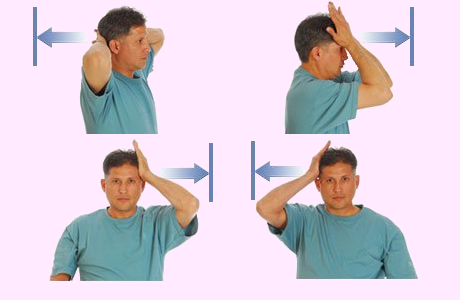
- Isometric neck exercises assist to strengthen the neck muscles. This exercise is mostly prescribed by Physiotherapists from day one to relieve Neck pain.
Isometric Neck Exercise
How to perform this exercise In a sitting alignment, - keep the Body steady and straight, Place both hands beside the neck (as seems in the images), & try the neck to push compress on the hands & At the same time Resist the neck muscles, both hands steady and align pattern for 4 to 5 secs & then relax.
- The first day does 8 reps & the 2nd day does 10 reps. Do some exercise on the forehead & each side of the neck.
- Do the exercise by compressing the side of the head. Repeat 8 times, then opposite sides.
Prone Rows Exercise
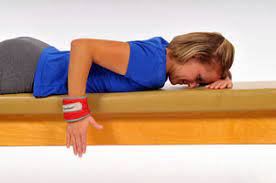
- Lie down on the stomach with the arms dangling off the side of the bed (just angling the body so the head is turning the corner of the bed).
- Use a pillow below the stomach for comfort. Start by pulling your arms back while bending elbows & contracting the shoulders blades together then gently back to the initial position.
- Do not raise your head up while pulling the arms back.
- Repeat twenty times. Perform two times a day.
Standing pushups exercise

- Stand about an arms-length down from the wall with the bases spread piecemeal.
- Place the hands on the wall, making sure that they parallel with the shoulders.
- Keeping the reverse straight, sluggishly bend or flex the elbows, bringing the upper body toward the wall.
- Extend the elbows & back to the initial position.
- Repeat twenty times. Perform two times a day.
Lateral extension exercise
- Begins by looking forward ahead. Gently lean the head to the left side. Use the left hand for resistance, use the muscles in the neck to press against it. Hold for 5 to 10 secs, then return to the initial position.
- Then, slowly lean the head to the alternate side. Hold for 5 to 10 secs.
- Return to the initial position. Do 10 repetitions. This is a good exercise to do while in working hours, especially if you have to keep the head in a steady position for prolonged periods, as in working at a computer.
Tilted forward flexion exercise
- Sluggishly lean the head to the leftism. Using the left hand for resistance, use the muscles in the neck to press against it. Hold for 5 to 10 secs, also return to starting position.
- Also, sluggishly lean the head to the other side. Hold for 5 to 10 secs.
- Return to starting position. Do 10 repetitions. This is a good exercise to do during work, especially if you have to keep the head in a steady position for a prolonged time as in working at a computer. Do this exercise every partial hour to help with the prevention of neck tightening.

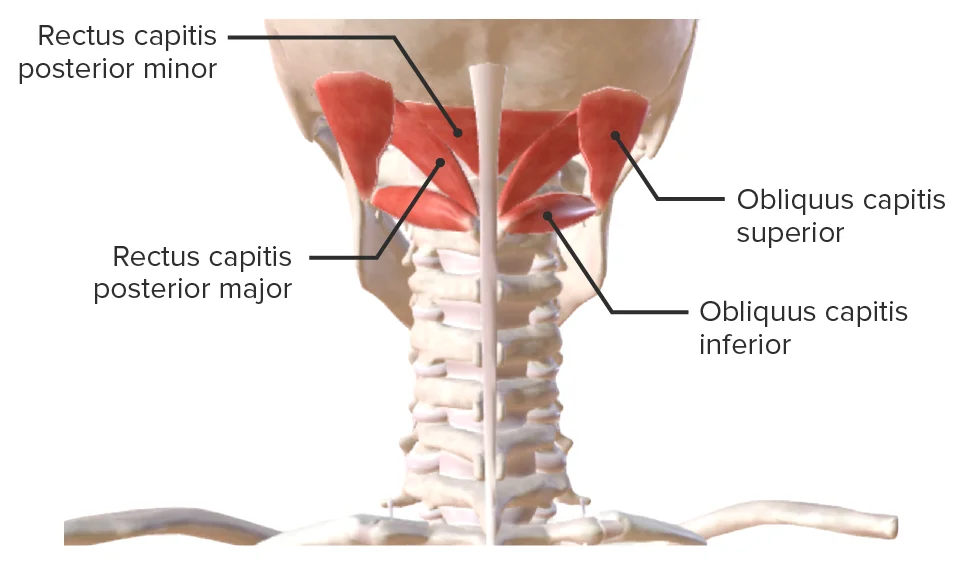
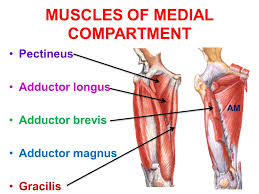
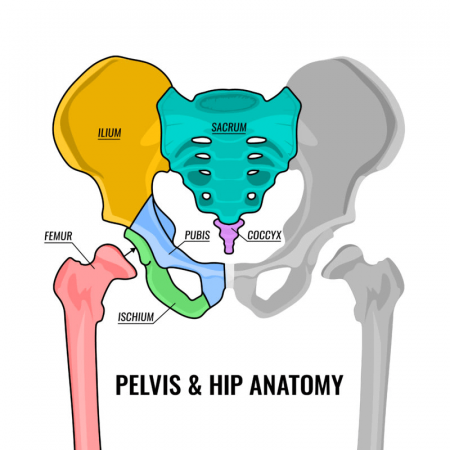
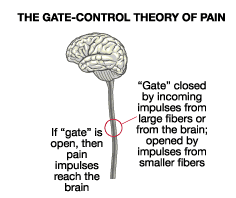
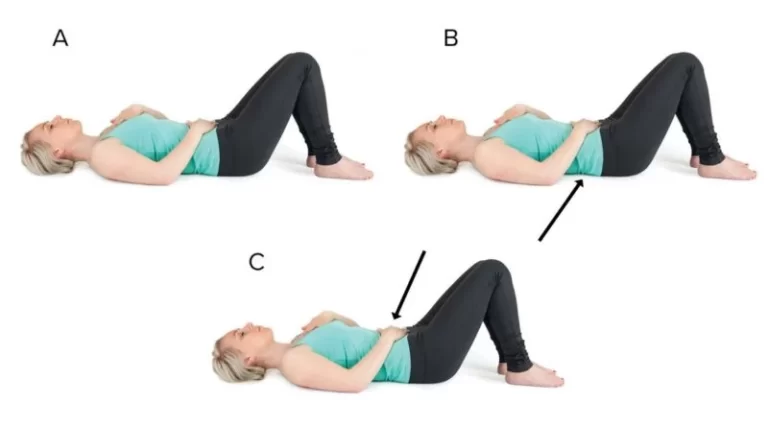
2 Comments